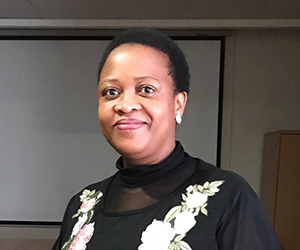The first 1 000 days of a baby’s life, from conception to the age of two, are of critical importance as they represent the springboard which will determine the projection of the baby’s life.
It is for this reason that the Mother and Child Academic Hospital (MACAH) Foundation embarked on the First 1 000 Days’ campaign to create knowledge and awareness around this concept. MACAH is working with the University of the Free State’s (UFS) and the Department of Paediatrics and Child Health to provide healthcare to mothers, their babies and children.
Dr Lizzy Tabane, new Head of Department for Paediatrics and Child Health in the Faculty of Health Sciences says: “Better knowledge amongst our youth about the first 1 000 days is crucial for them to plan their careers and dream big about their future. This could also have an impact on the quality of life of their children. We need to empower our youth through awareness and knowledge to make the right choices.”
The campaign will be launched on 1 November.
According to Prof André Venter, MACAH Founding Director, there is basically pregnancy and two years to “get it right”.

A look at the first 1 000 days
“If we don’t get it right, there are dire consequences, especially for your newborn baby. So let’s look at these first 1 000 days. Firstly, there is the pregnancy and we would want the pregnancy to be as good as possible. That means the mother must be in good mental health, good physical health and have a good social and economic support to carry her through this time.
“Once the baby is born, there have to be people to look after the baby The baby needs to bond; and this is actually a magical time,” says Prof Venter.
According to Prof Venter, the mother-child dyad is important because the mother is there to make sure the child is adequately fed as well as to make sure the baby develops. The mother is also there to provide emotional support. If this is lacking, the baby can grow up with marked emotional and behavioral difficulties, which will not stand it in good stead for its future.
“So the first 1 000 days are critically important and we need to get it right,” he says. Prof Venter, who is passionate about children and their development, nutrition, growth and thriving, is passionate about the first 1 000 days as it is one of the main interventions that has been shown to be effective to break the generational cycle of poverty in a population.
Says Prof Venter: “If we don’t look after our pregnant mothers and don’t look after our young children, we put them on a trajectory that is always going to fail the child in the future. If we can get the first 1 000 days right, we can perhaps get them on the trajectory they should be, so that they fulfill their destiny and have a much more fulfilling life, both financially and physically, but also emotionally.
“So, yes, it is urgent and imperative that we have to get it right. We have to break the cycle of misery, poverty and unrequited dreams now,” says Prof Venter.


Dr Lizzy Tabane. Prof André Venter.